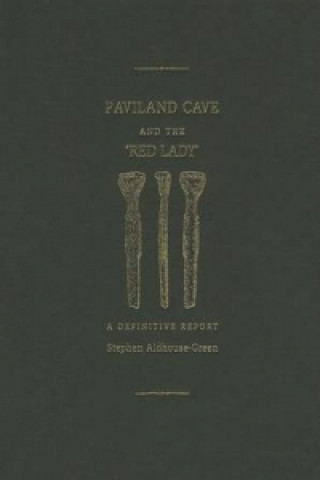
Code: 04764429
Paviland Cave and the Red Lady
Paviland Cave on Wales' Gower Peninsula, discovered in 1823, contained the remains of a young adult male, covered with red ochre, misidentified as 'the red lady'. The richest Early Upper Palaeolithic site in Britain, its recent re ... more
- Language:
 English
English - Binding: Hardback
- Number of pages: 314
Publisher: Western Academic & Specialist Press Ltd, 2000
- More about this

You might also like
-

Sunny Spells
152.92 zł -

Programming Collective Intelligence
193.74 zł -10 % -

Lykophron: Alexandra
1377.42 zł -

Henri Poincare, 1912-2012
722.17 zł -

50 Ways to Find a Lover
176.10 zł -

To Distraction
47.37 zł -23 %
Availability alert
Enter your e-mail address and once book will be available,
we will send you a message. It's that simple.
More about Paviland Cave and the Red Lady
 Book synopsis
Book synopsis
Paviland Cave on Wales' Gower Peninsula, discovered in 1823, contained the remains of a young adult male, covered with red ochre, misidentified as 'the red lady'. The richest Early Upper Palaeolithic site in Britain, its recent re-excavation, a study of previously excavated artefacts and a suite of radiocarbon dates have enabled intriguing new interpretations to be made of Paviland. Paviland Cave on the Gower Peninsula of Wales is the richest Early Upper Palaeolithic site in Britain. It came to light in 1823 when the Reverend William Buckland discovered the remains of a young adult male, covered with red ochre, in Goat's Hole Cave, Paviland. The circumstances of the burial hint at a ritual or shamanic use of the site. Ceremonially buried, with ivory ornaments and perforated sea shells, the body soon became the subject of debate, not least because the original finder of the skeleton pronounced it that of a woman, the 'Red Lady' of Paviland. The recent re-excavation of the site, a new study of previously excavated artefacts, and a suite of radiocarbon dates, have enabled reconstruction of the phases and nature of human use of the cave. Set in the context of climatic and environmental change, this has allowed new, intriguing interpretations to be made of Paviland. The first human presence, in this case that of Neanderthals, may date back to 50,000 years ago. The presence of an anatomically modern human at Paviland c. 26,000 BP, with no trace of Neanderthal features, poses questions about the timing of the colonisation of the British Peninsula by modern humans. The issue of whether parts of Britain were either empty of human population at this time or, alternatively, served as refugia for the last surviving populations of Neanderthals is discussed. The dating evidence from Paviland suggests that the Aurignacian appeared relatively late in Britain, towards 28,000 BP, and the Britain was only infrequently visited by task groups or - more controversially - pilgrims during the climatic downturn from 27,000 BP until the onset of the Last Glacial Maximum. The project to re-evaluate the site and to re-study the artefacts began in 1996, led by Dr Stephen Aldhouse-Green of the University of Wales College, Newport, and was completed in 1999. This volume is the definitive report of that study
 Book details
Book details
Book category Books in English Humanities Archaeology Archaeology by period / region
- Full title: Paviland Cave and the Red Lady
- Subtitle: A Definitive Report
- Language:
 English
English - Binding: Hardback
- Number of pages: 314
- EAN: 9780953541812
- ID: 04764429
- Publisher: Western Academic & Specialist Press Ltd
- Weight: 1361 g
- Dimensions: 280 × 220 × 25 mm
- Date of publishing: 01. December 2000
Trending among others
-

Lifeways of Hunter-Gatherers
165.62 zł -5 % -

Lost Technologies of Ancient Egypt
104.43 zł -7 % -

Magicians of the Gods
49.08 zł -31 % -

Egyptian Hieroglyphs for Complete Beginners
61.28 zł -23 % -

Horse, the Wheel, and Language
152.21 zł -

War before Civilization
133.16 zł -

Petra
38.09 zł -23 % -

Cat in Ancient Egypt
52.01 zł -23 % -

Complete Pompeii
93.24 zł -23 % -
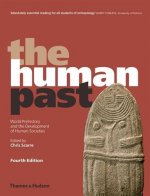
Human Past
284.67 zł -

Scenes from Prehistoric Life
116.42 zł -23 % -

Across Atlantic Ice
199.49 zł -

Book of Enoch
145.45 zł -5 % -

Timewalkers
78.01 zł -14 % -

Creating the Human Past
173.28 zł -
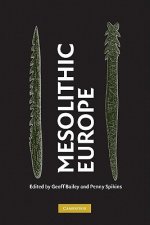
Mesolithic Europe
586.49 zł -
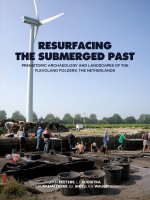
Resurfacing the Submerged Past
300.30 zł -4 % -

American Beginnings
330.84 zł -
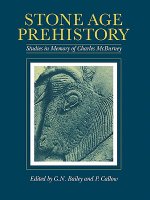
Stone Age Prehistory
138.50 zł -

Her Cup for Sweet Cacao
286.58 zł -9 % -

Lindow Man
66.12 zł -

Against the Grain
93.74 zł -5 % -

Dress Accessories, c. 1150- c. 1450
154.23 zł -14 % -
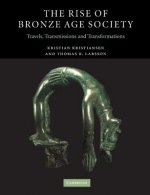
Rise of Bronze Age Society
372.07 zł -

Lewis Chessmen: Unmasked
42.43 zł -15 % -
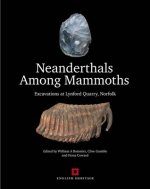
Neanderthals Among Mammoths
858.06 zł -

Biblical Archaeology: A Very Short Introduction
42.93 zł -23 % -

Bible Unearthed
81.24 zł -10 % -

Seismosaurus
474.69 zł -

Treasures of the Valley of the Kings
108.56 zł -29 % -

Divine Creatures
104.12 zł -7 % -

Tutankhamun
139.31 zł -23 % -

Hieroglyphics
113.50 zł -15 % -
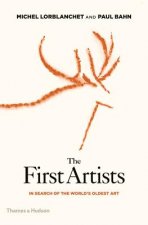
First Artists
93.24 zł -23 % -

In Search of the Indo-Europeans
146.16 zł -1 % -

Performance Power and the Art of the Aegean Bronze Age
249.29 zł -

Tasting the Past
103.62 zł -14 % -

Classical Archaeology 2e
204.73 zł -

Upper Pleistocene Prehistory of Western Eurasia
365.22 zł -

Humans at the End of the Ice Age
875.10 zł -

Medieval European Coinage: Volume 14, South Italy, Sicily, Sardinia
424.19 zł -

Prehistory: A Very Short Introduction
55.63 zł -5 % -
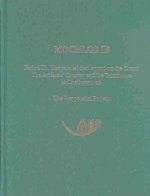
Mochlos IB
529.43 zł -

Salt in Prehistoric Europe
151.71 zł -4 % -

Prehistoric Rock Art
142.23 zł -14 % -

Medieval Household
275.40 zł -

Complete Cities of Ancient Egypt
116.12 zł -23 % -

First Signs
56.64 zł -23 % -
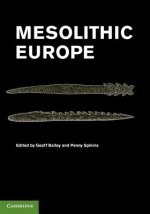
Mesolithic Europe
328.12 zł
safisfied customers
Since 2008, we have served long line of book lovers, but each of them was always on the first place.
Copyright! ©2008-24 libristo.pl All rights reservedPrivacyPoučení o cookies



 21 million books
21 million books Delivery 12.99 zł
Delivery 12.99 zł (32) 444 93 66 (8-15.30h)
(32) 444 93 66 (8-15.30h)